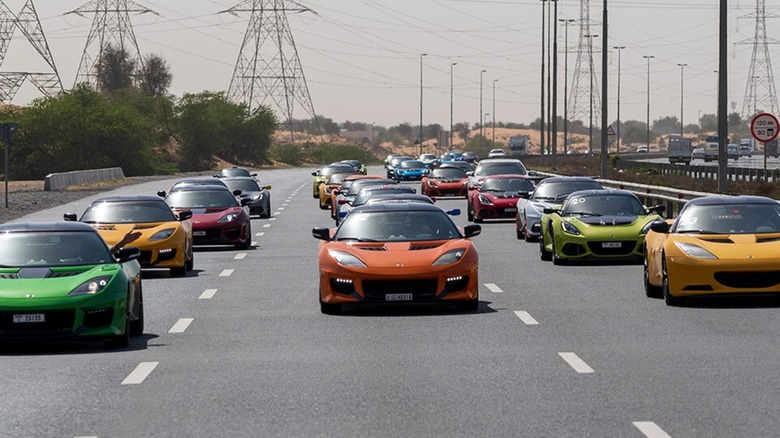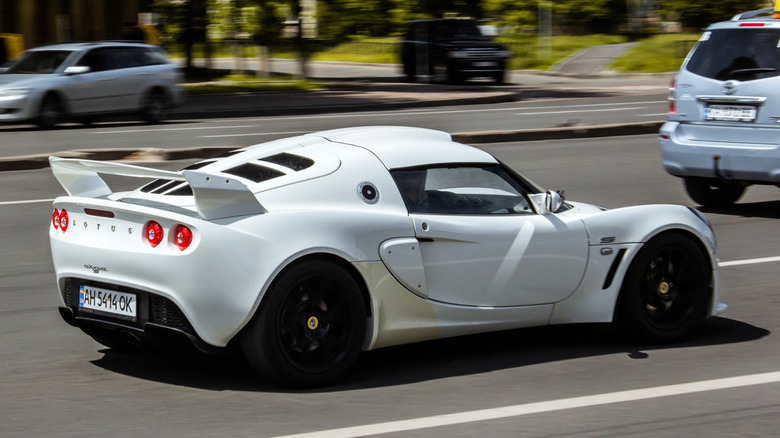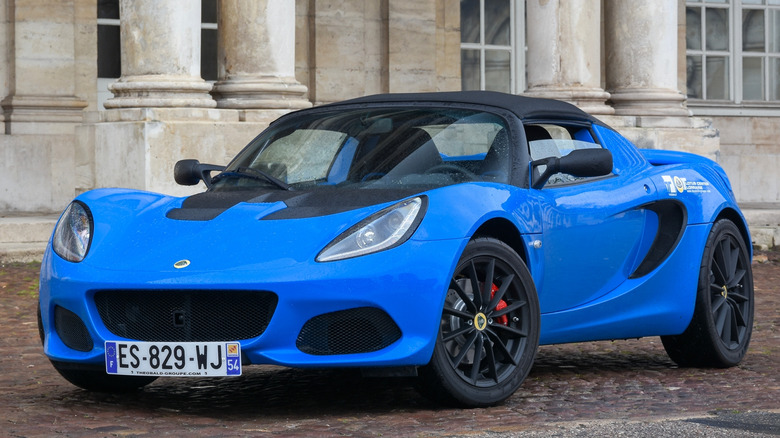Lotus Exige Vs. Elise: What's The Difference Between These Sports Cars?
The Lotus Elise and Exige are both relatively rare sights in the United States, as they were only sold here until 2011. The British cars are known for their great handling, aggressive design, and raw driving experience. But more casual fans may be left wondering what the real difference is between the Elise and Exige beyond noticing a tail on one as it races down the track.
The Lotus Elise Series 1 was introduced back in 1996, named after then Lotus Chairman Romano Artioli's granddaughter and designed to be the successor to the Elan with a focus on being lightweight and agile. It was followed by the Lotus Elise S2 in 2000 and then the S3 in 2010. The Exige was also introduced in 2000, meant to be an even more aggressive variation of the Elise with more track-ready components. The Lotus Elise and Exige were both discontinued in 2021 to make way for the Lotus Emira but, what actually are the differences between these cars?
Elise vs. Exige: Outside differences in a clam shell
The Lotus Elise and Exige are quite similar in appearance, but you'll notice a lot more aggressive features on the Exige once you take a closer look. The biggest difference can be seen on the hood and rear clam shell. The Elise comes with a soft top — although there are hard tops available — but the Exige is strictly a hard top with a functional scoop that feeds air into the intercooler near the mid-engine.
From there, the Elise dips into a flat engine cover with plastic vents, while the Exige has a raised and curved back with mesh on its openings, allowing for more room near the engine. The Elise has a back window while the Exige has basically no rear visibility. And the most noticeable difference? The Exige has a big rear wing. The sides of both cars differ in style, with many Exige models featuring mesh on the vents and bolts on the door for a more aggro aesthetic.
There are other small differences between both cars' bodies, and these can vary depending on which generation and model of Elise and Exige you're comparing. For example, older Elise models from the early 2000s have a second light on each side of the front for its turn signals, while newer generations have just the singular headlights with a sharper shape. The Exige has also changed its appearance over the years, including special edition models with unique design components like aerodynamic elements and bucket seats inside.
Elise vs. Exige: Engine differences (sort of)
Is the Exige deserving of its more aggressive appearance? Many would say so thanks to its added power and downforce, making its performance a bit feistier than the Elise. There are some small variations in suspension and other components, but the big difference is the engine setup. The Lotus Elise Series 1 used Rover's 1.8-litre 118-bhp K-Series engine, but this was changed to the Toyota 2ZZ engine for Series 2 and beyond — and for the Exige. This is the same engine found in the Toyota Celica, but the Elise and Exige have better acceleration and faster top speeds than the Celica due to their lighter weight (with the Elise typically weighing under 2,000 pounds and the Exige surpassing that number just slightly).
The Exige also received a supercharger in 2007 (hence the need for a rounder rear shape). This boosted it from 190 horsepower to 220 horsepower in the S model. The Elise SC had an optional supercharger in 2008, bringing it to 217 hp. However, it had no intercooler. In a later version of the Exige, it was given a supercharged Toyota V6 like the Lotus Evora, making it even more powerful on the track.


